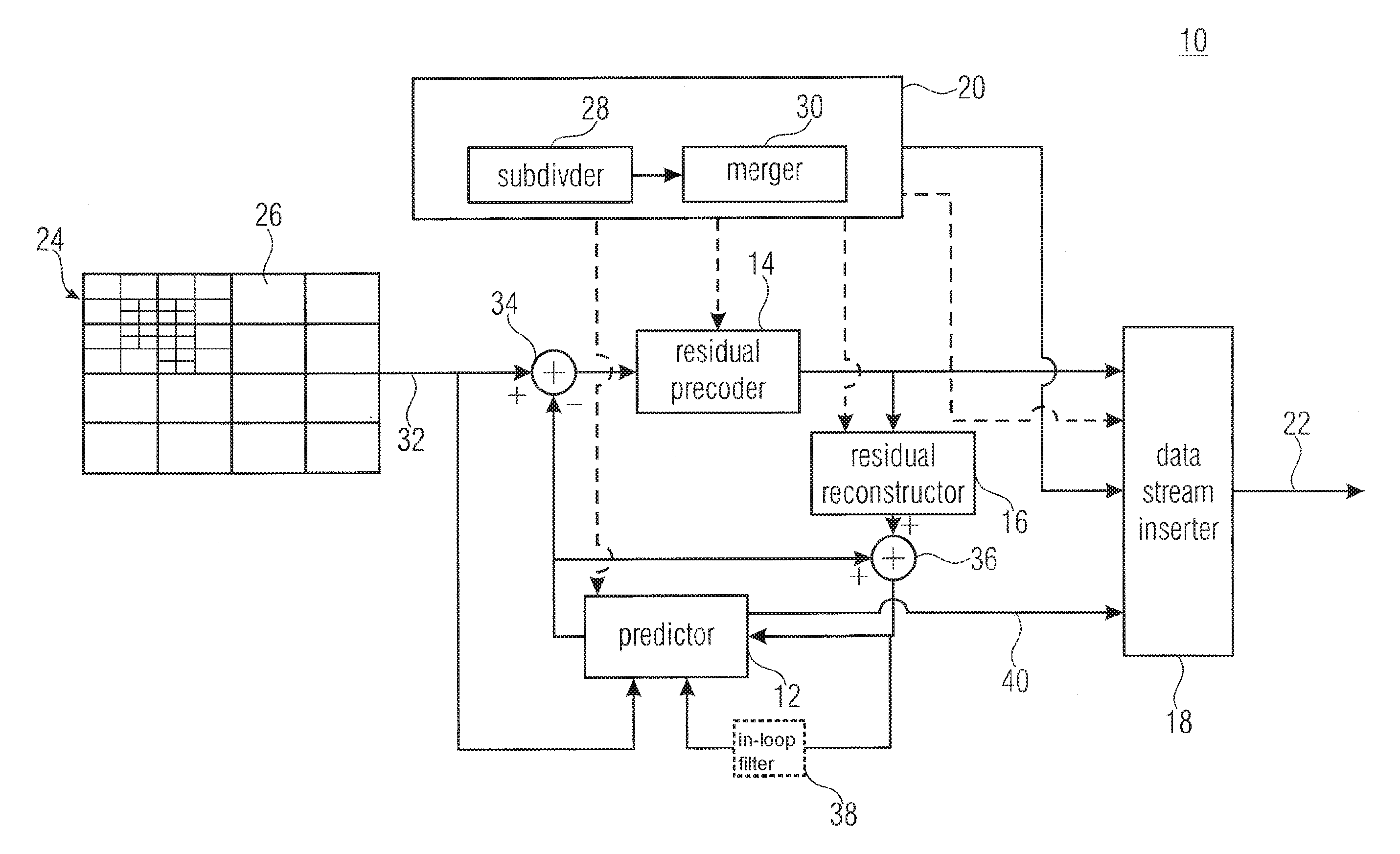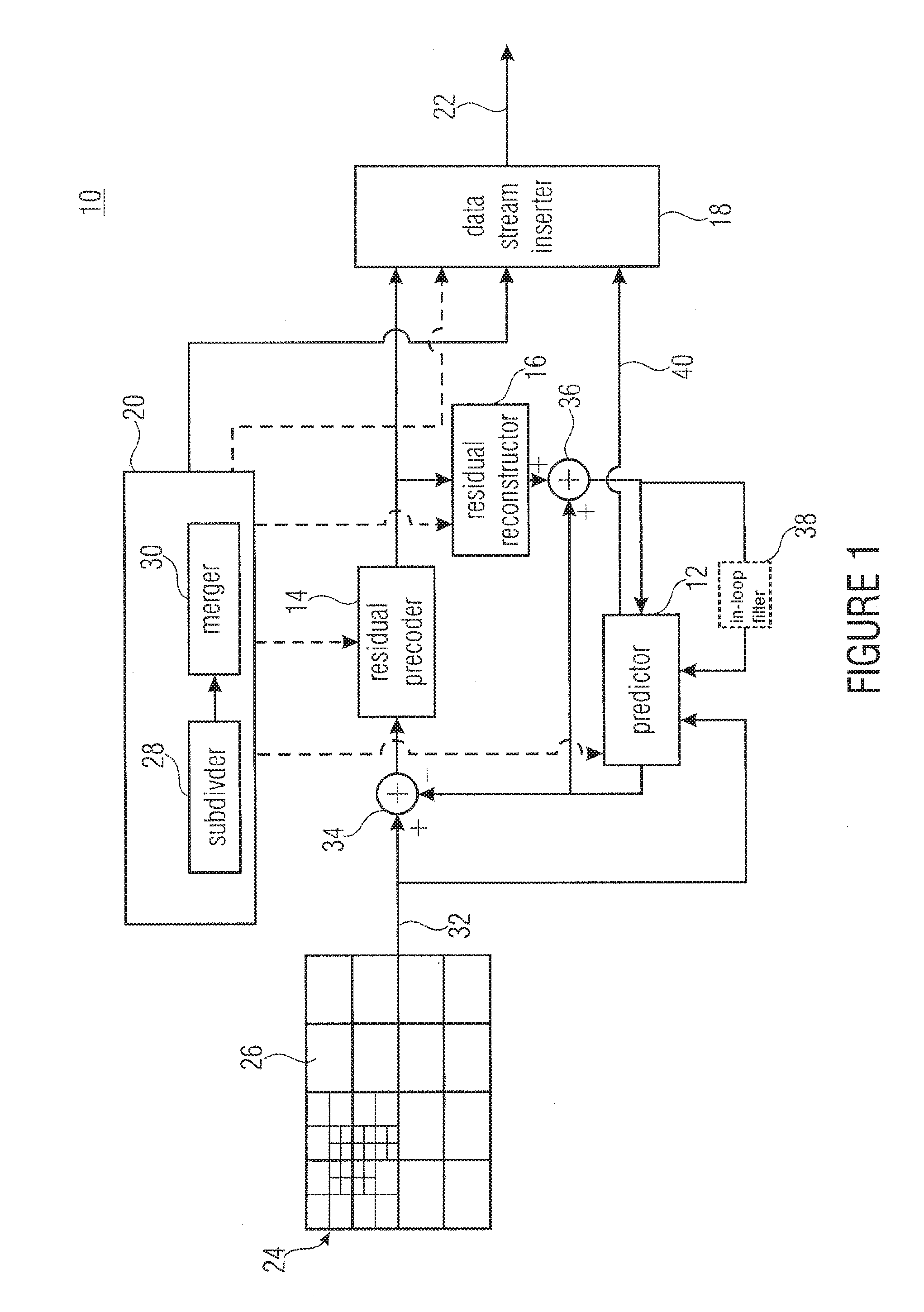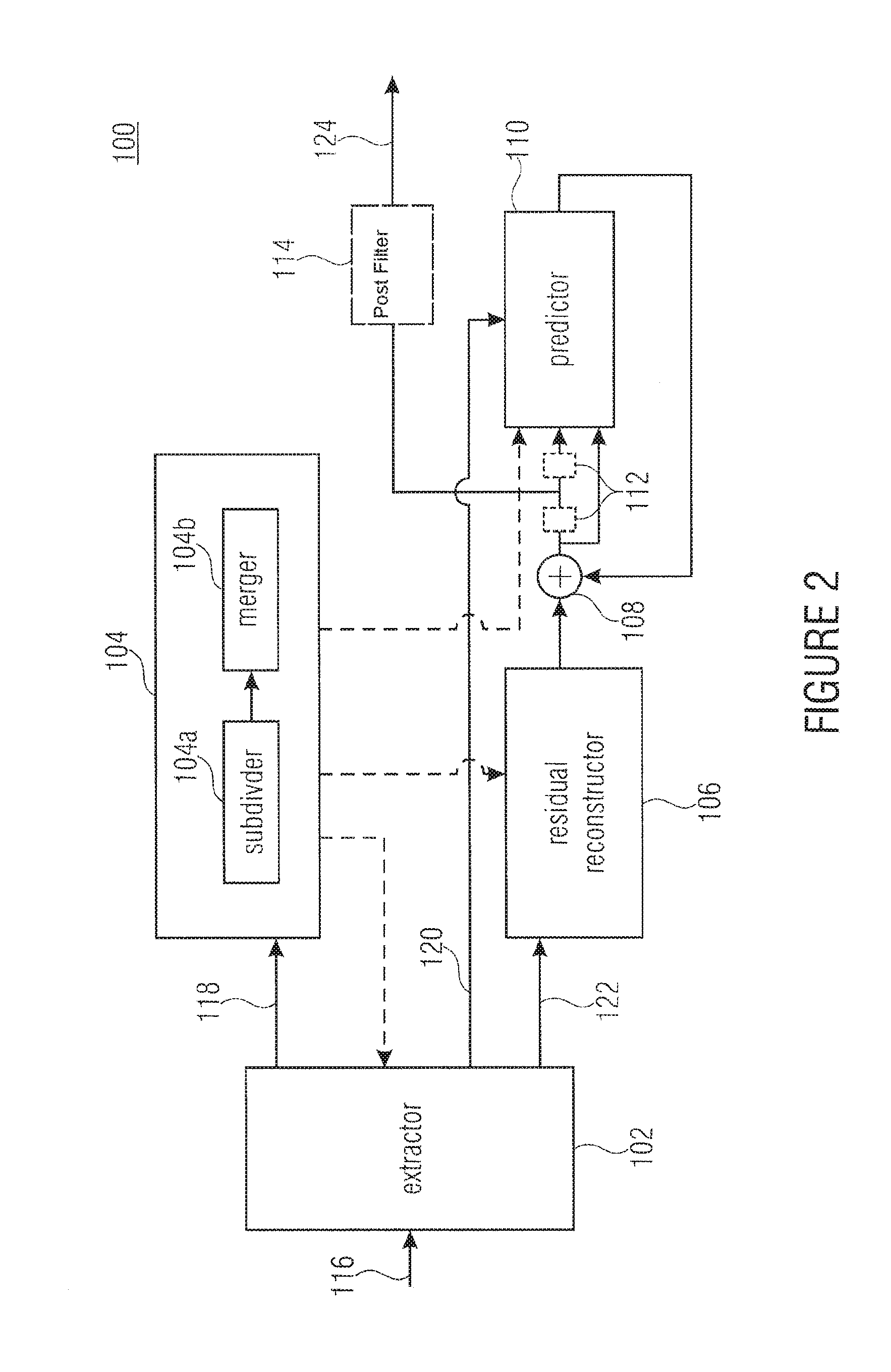Inheritance in sample array multitree subdivision
a multi-tree and sample array technology, applied in the field of image and video coding, can solve the problems of large number of small blocks, large number of sub-dividing pictures, and large bit rate that may be used for transmitting the prediction parameters of blocks
- Summary
- Abstract
- Description
- Claims
- Application Information
AI Technical Summary
Benefits of technology
Problems solved by technology
Method used
Image
Examples
Embodiment Construction
[0054]In the following description of the Figs., elements occurring in several of these Figs. are indicated by common reference numbers and a repeated explanation of these elements is avoided. Rather, explanations with respect to an element presented within one Fig. shall also apply to other Figs. in which the respective element occurs as long as the explanation presented with these other Figs. indicate deviations therefrom.
[0055]Further, the following description starts with embodiments of an encoder and decoder which are explained with respect to FIGS. 1 to 11. The embodiments described with respect to these Figs. combine many aspects of the present application which, however, would also be advantageous if implemented individually within a coding scheme and accordingly, with respect to the subsequent Figs., embodiments are briefly discussed which exploit just-mentioned aspects individually with each of these embodiments representing an abstraction of the embodiments described with...
PUM
 Login to View More
Login to View More Abstract
Description
Claims
Application Information
 Login to View More
Login to View More - R&D
- Intellectual Property
- Life Sciences
- Materials
- Tech Scout
- Unparalleled Data Quality
- Higher Quality Content
- 60% Fewer Hallucinations
Browse by: Latest US Patents, China's latest patents, Technical Efficacy Thesaurus, Application Domain, Technology Topic, Popular Technical Reports.
© 2025 PatSnap. All rights reserved.Legal|Privacy policy|Modern Slavery Act Transparency Statement|Sitemap|About US| Contact US: help@patsnap.com



